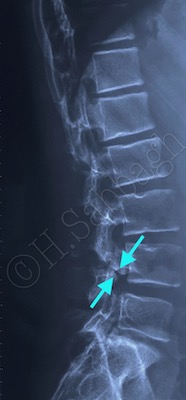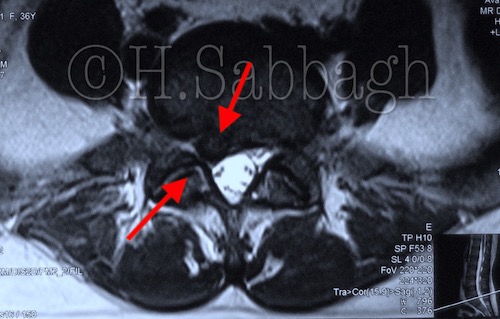Discussion
There is no doubt that this particular case represented significant IVD extrusion with expected neurological implication. In fact my initial recommendation, considering patient history, imaging and examination findings was also surgical intervention.
The purpose of this and other similar case reports is not necessarily to justify conservative treatment oppose to surgical intervention. However, it is meant to emphasis that even in circumstances in which surgical intervention is considered, other treatment options may be available for selected patients. This is an important consideration for patients who due to variety of medical or other restrictions, surgery should be reserved as the very last option.
In this case report further emphasize is made regarding safe application of the DPPP-SAA treatment protocol, with expected results in a relatively short period of time. In fact, response to treatment can be determined after the first three sessions, avoiding any significant time lost.
The specificity of the DPPP-SAA treatment protocol also allows tailored treatment procedure for each individual patient, consideration the neurological presentation, morphology of the affected IVD, and its relative stability. In fact, the treatment protocol can be tailored for each patient based on their particular clinical presentation. This is in contrast to most other physical treatment procedures in which there is usually a routine treatment procedures in place, which is then applied to similar cases. In fact, in these procedures attempt is made to fit the patient to the pre-set treatment program, regardless of individual variations. And this in itself can lead to further exacerbation of some cases, and lack of response in others.
The DPPP-SAA treatment protocol is obviously not effective for all patients, and proper patient selection in this treatment protocol is just as important as in any other intervention. However, because it allows for initial evaluation of patient response in a relatively short period of time, and by utilizing a dynamic, non aggressive approach, in addition to an accurate monitoring system (S1-Locus Monitoring Instrument), it is considered a safe alternative treatment protocol.
Even so further clinical trials, and research studies are required for accurate evaluation of the efficacy of this specific protocol (DPPP-SAA), case reports such as this help to advise our colleagues about the importance of specificity of treatment procedures, and furthermore provide interdisciplinary communication regarding alternative safe and effective treatment options available for selected patients who may very well benefit from them.
It is also important to note that treatment of radiculitis due to discopathy as well as discogenic pain in general requires a completely different approach from treatment of localized low back pain, or non complicated inter-segmental dysfunctions. The clinician is required to have completed a postdoctoral studies in this area, including functional and specific discopathy related neurology as well as advanced imaging studies. Furthermore, the DPPP-SAA treatment protocol is a sensitive treatment procedure with no pre-set parameters, it therefore requires a qualified clinician who has been certified in this protocol.
In closer, clinical observations, pre treatment and post treatment examination and neurological evaluation results complemented by follow up EMG/NCV studies, and of course routine pre treatment and post treatment MRI follow up study comparison results are important factors which deserve our clinical consideration.
H. Sabbagh, D.C.
Updated: June 03, 2023


